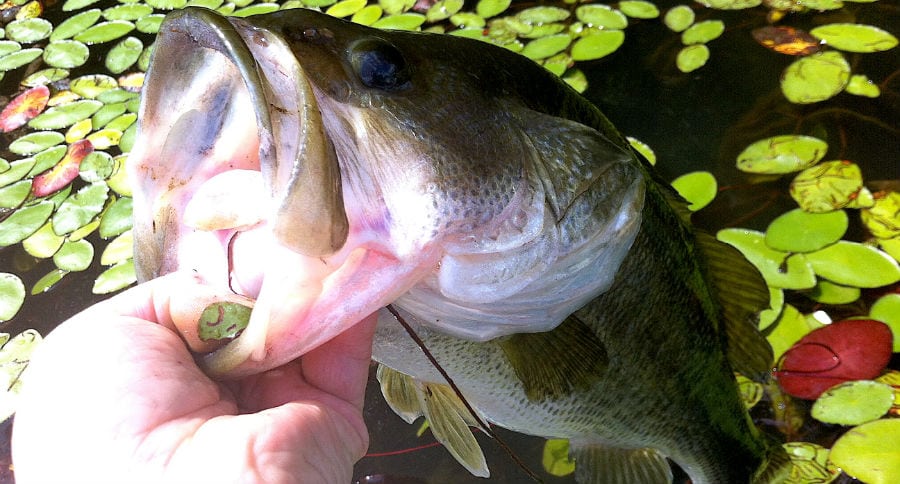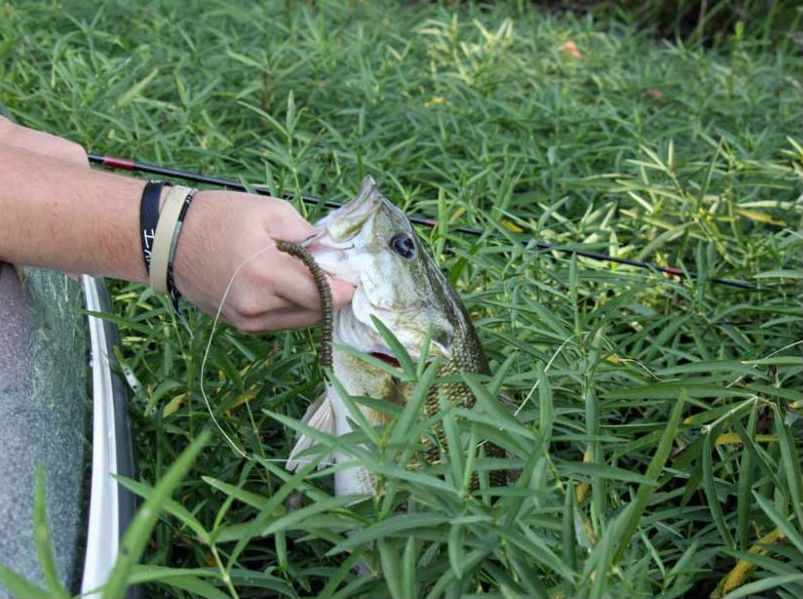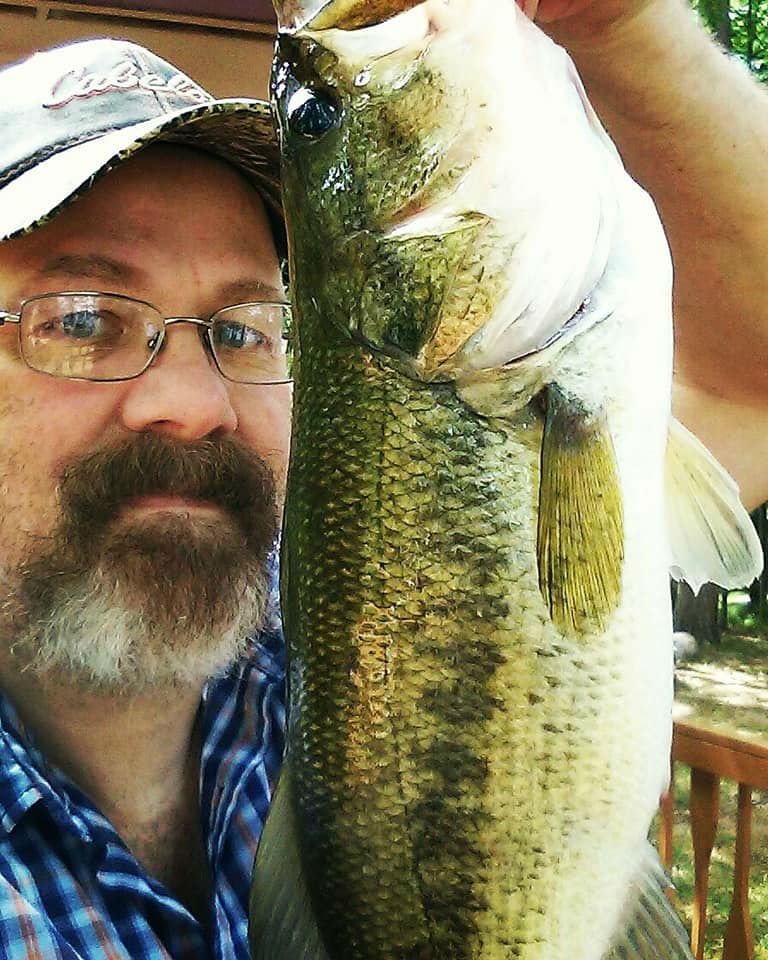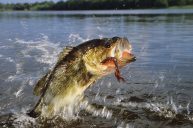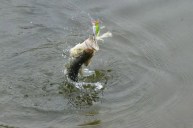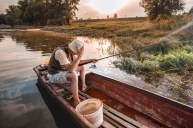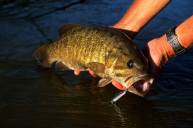Knowing how to fish bass in cover is essential to catching big fish.
Largemouth bass love to hang out in vegetation. Green cover allows bass hiding opportunities from which they can ambush prey. But fear of hang-ups and snags prevent a lot of anglers from casting into the green stuff. If you can overcome that fear and fish bass in cover, you'll undoubtedly become a better fisherman and catch more big bass.
In identifying good bass fishing cover, we should first note there's some question about the difference between cover and structure. People often use the terms interchangeably, but in broad terms, structure is the more or less permanent features of a body of water. These would include drop-offs, points, humps and holes. Cover on the other hand, would include mostly impermanent features, such as vegetation like lily pads, weed beds or grass.
It's fair to say that if you can identify a location that combines both transient cover with permanent structural features—green weed beds associated with a point, for example—you've likely found a fishing hot spot.
The type of vegetation cover and structure you encounter during your fishing trip will determine how you fish and the kind of lure choices you'll make.
Lily pads
You can often find lily pads in shallow water with a muddy or silty bottom composition. The attraction of lily pads is that the water underneath is usually several degrees cooler than the surrounding water. This is a significant fish attractant in the heat of summer. You won't necessarily find active bass hiding under lily pads, but you can trigger reaction strikes by fishing topwater baits. Topwater frogs, mousies, poppers and other floating lures have proven themselves to be great bass attractors in lily pads.
Dropping a lightly weighted or pegged Texas rig into an opening in the pads is also a proven killer for lazy, midday bass. Soft plastics on a Carolina rig also work well if the pads are relatively sparse.
Floating mats or slop
Slop is that heavy cover that at first glance seems impossible to penetrate. It's also a food-chain magnet, attracting all of the little critters that small prey fish feed on, which in turn attracts the big fish that bass fishermen seek.
Heavy line and stout gear are in order for fishing slop. I personally prefer braided line over mono. Forego treble hooks, and rely on weedless hooked topwater lures or single hook plastics. You'll want to cast to pockets and breaks in the slop. This kind of fishing will test and improve your casting accuracy and your patience, as you'll be pulling weeds from your lure fairly regularly.
Emergent vegetation
Emergent vegetation includes reeds, bulrushes, arrowheads or any vegetation that grows beyond the surface of the water. This type of vegetation is prime northern pike habitat, but I've also infrequently caught some very nice largemouth from it. The fish always seem to be active in this kind of cover.
Pitching and flipping spinner baits and plastics is an effective way to catch bass. Casting weedless spoons like Johnson's Original Silver Minnow is also a proven strategy. I like the black Johnson's spoon here, but they seem to be getting harder to find in tackle shops.
Submerged weeds
Submerged weeds are just as they sound: weed growth that's all underwater. These occur in both shallow water and deep water. Weedflats on bars are typical, as are weedlines that separate one piece of structure from the next.
Fishing submerged weeds can be less a game of pinpoint casting and more about covering the area thoroughly. That is unless you can find another piece of cover or structure like timber or rocks in amongst the weeds. Such spots become holding points for larger predators.
In submerged weeds, bass can simply sit in and under the weeds and wait for prey to pass by overhead. Occasionally, topwater baits will draw them out if water conditions are calm. Otherwise, fast-retrieve a spinnerbait or crankbait over the tops of the weeds to trigger a strike.
Submerged weeds are also a great place to practice your fly fishing technique. If you're a modestly skilled fly fisherman like me (and "modestly skilled" is giving myself more praise than is warranted), fishing over submerged weeds is a great way to improve your casting technique. It's also a ton of fun when you hook into a nice bass.
Trolling a crankbait or swimbait also works well in submerged weed beds. This is where your spinning rod and gear really shines.
Like what you see here? Experience more articles and photographs about the great outdoors at the Facebook page, Stumpjack Outdoors.
NEXT: 10-POUND LARGEMOUTH BASS CAUGHT FROM HOBIE KAYAK
WATCH
